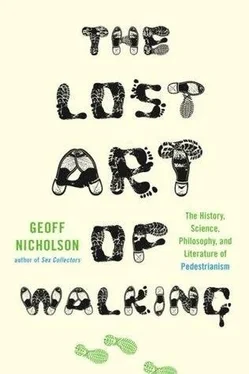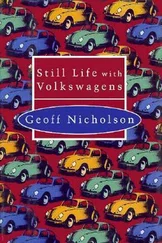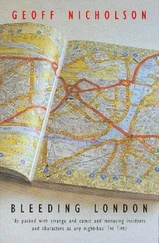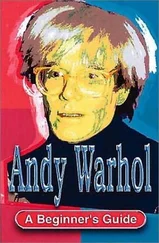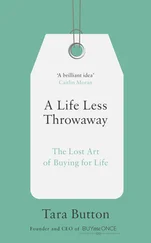I’d picked up a free magazine on the way in, so that I’d have something to read as I drank, and now I saw there was an ad on the back page showing a map of Manhattan. I looked at it with a certain desperation. I was feeling more than ever the need to do a ‘good’, ‘proper’, ‘constrained’ New York walk. I hoped that some walking route would leap up off the map and demand to be done.
And then — OK, I’d sunk most of a martini by then — as I stared at the pattern of streets near to where I was, I quite clearly saw the shape of a martini glass. Really. A stretch of University Place formed the base of the glass. Eighth and 9th streets heading west formed the uprights of the stem, while Christopher Street and Greenwich Avenue diverged at equal angles to form the two sides of the conical bowl. The triangle was completed by Hudson Street, not an absolutely straight line across the top since it contained a slight kink or rise about halfway along, but that was OK, and could be thought to resemble the meniscus of liquid that rises above the rim of a truly full martini glass.
I drew on the map, emphasizing the outline. What else was there to do but walk the streets that represented the shape of the glass, and at certain strategic points around the route find a bar and have another martini? There was something a bit dumb about it, but it didn’t seem a whole lot dumber than some of the things the Conflux crowd had come up with. It featured walking, martinis, exploring the city, imposing a shape on the environment. What more could a psychogeographer want?
As a route for a walk, and a bar crawl, it had its attractions. It took me past and/or into some famous watering holes: the Cedar Tavern, home of the fighting abstract expressionists, and from where Jack Kerouac was supposedly ejected for peeing in an ashtray — the White Horse, where Bob Dylan went to hear the Clancy Brothers — the Stonewall, scene of gay resistance, though closed and available for rent when I walked by. And on Greenwich Avenue I saw, painted on a wall, the outline of a muted post horn — if you’re in the right frame of mind a post horn can look a lot like a martini glass.
But you know what, all in all it was another bust. The overriding problem was that walking the streets gave no sense of following the shape of a martini glass. Even though I had it clearly enough in my head, it still didn’t compute. You’d have had to be a bird or a tracking satellite or a god to see what I was doing down here. As Denis Wood says, ‘The map is not the territory’.
It occurred to me, not exactly for the first time, that psychogeography didn’t have much to do with the actual experience of walking. It was a nice idea, a clever idea, an art project, a conceit, but it had very little to do with any real walking, with any real experience of walking. And it confirmed for me what I’d really known all along, that walking isn’t much good as a theoretical experience. You can dress it up any way you like, but walking remains resolutely simple, basic, analog. That’s why I love it and love doing it. And in that respect — stay with me on this — it’s not entirely unlike a martini. Sure you can add things to martinis, like chocolate or an olive stuffed with blue cheese or, God forbid, cotton candy, and similarly you can add things to your walks — constraints, shapes, notions of the mapping of Utopian spaces — but you don’t need to. And really, why would you? Why spoil a good drink? Why spoil a good walk?
I abandoned my own constrained walk with as much enthusiasm as I’d abandoned the psychogeography festival. I walked the city feeling remarkably free, a spring in my step and several much-needed martinis in my bloodstream.
♦
Guy Debord was a serious drinker who enjoyed the derangement of the senses. He drank as he drifted, and had no shame about it. In his memoir Panegyric he writes:
‘I never for a moment dreamed of concealing this perhaps questionable side of my personality, and it was clearly evident for all those who met me more than once or twice…
‘At first, like everyone, I appreciated the effect of mild drunkenness, then very soon I grew to like what lies beyond violent drunkenness, once that stage is past: a terrible magnificent peace…Although in the first decades I may have allowed only slight indications to appear once or twice a week, I was in fact continuously drunk for periods of several months.’
He was undoubtedly drunk while conducting some of his psychogeographic drifts. He was probably drunk when he formulated some of the tenets of psychogeography. He adds, ‘I have wandered extensively in several great European cities, and I appreciated everything that deserved appreciation. The catalog on this subject could be vast……’ He then proceeds to catalog not great sights, much less unities of ambiance, but rather the joys of alcohol: first, beer — English, Irish, German, Czech, and Belgian — then he goes on to celebrate wines, spirits, cocktails, punches et al.
Debord ended his life as a scholarly recluse, living in his cottage in Champot, in the Upper Loire, with his second wife, Alice Becker-Ho. The photographs taken of him in the early 1990 sshow a plump, happy man, usually with a drink and a pipe in his hand. He doesn’t look much like a walker, but we know that walkers come in all shapes and sizes. In any event, as he got older he did far more drinking than walking, and eventually he developed a form of polyneuritis brought on by alcohol. The pain was so intolerable that he committed suicide in 1994 by shooting himself in the heart.
Debord never visited New York, but in his article ‘Theory of the Derive’ he writes:
‘Within architecture itself, the taste for deriving tends to promote all sorts of new forms of labyrinths made possible by modern techniques of construction.’
— and quotes from an uncited newspaper article describing a proposed New York apartment block.
‘The apartments of the helicoidal building will be shaped like slices of cake. One will be able to enlarge or reduce them by shifting movable partitions. The half-floor gradations avoid limiting the number of rooms, since the tenant can request the use of the adjacent section on either upper or lower levels. With this setup three four-room apartments can be transformed into one twelve-room apartment in less than six hours.’
Debord concludes that here;
‘One can see the first signs of an opportunity to derive inside an apartment’.
He was wrong about this, too. If he had ever been in one of the minute apartments where most New Yorkers actually live, he’d have seen just how limited the prospects are for the at-home drift. In fact, it’s always seemed to me that one of the reasons New Yorkers spend so much time walking the streets is precisely because their apartments are so small. They need to get out and walk, to experience the city’s ‘beauty, order and convenience’ so that they don’t go completely mad. This may also be why they need to walk to their nearest bar for a dry martini.
7. Some Desert Walkers, Walking in and Out of Nature, With and Without God
Holden: You’re in a desert walking along in the sand when all of a sudden you look down –
Leon: What one?
Holden: What?
Leon: What desert?
Holden: It doesn’t make any difference what desert, it’s completely hypothetical.
— screenplay of Blade Runner
Idon’t know much about gods, but it seems that they like their believers to do a lot of walking, metaphoric and literal. A lot of people are keen to walk with God — a lot of people insist that they already do.
In A.D. 341, St. Anthony, an Anchorite, one of the Desert Fathers, sometimes known as St. Anthony of the Desert, then age ninety, had a vision that told him Paul the Hermit, the very first Desert Father, was ‘nearby’, living in a cave in a different part of the Egyptian desert. Prayer walking was part of the Desert Fathers’ creed. They walked as they prayed, prayed as they walked. Anthony set out on foot to find Paul, although he had no idea where he was. According to St. Jerome, who is the only source for these events, a visionary centaur appeared to Anthony and pointed him in the right direction. After walking through the desert for three days he found Paul the Hermit, age 113, weak and close to death.
Читать дальше
